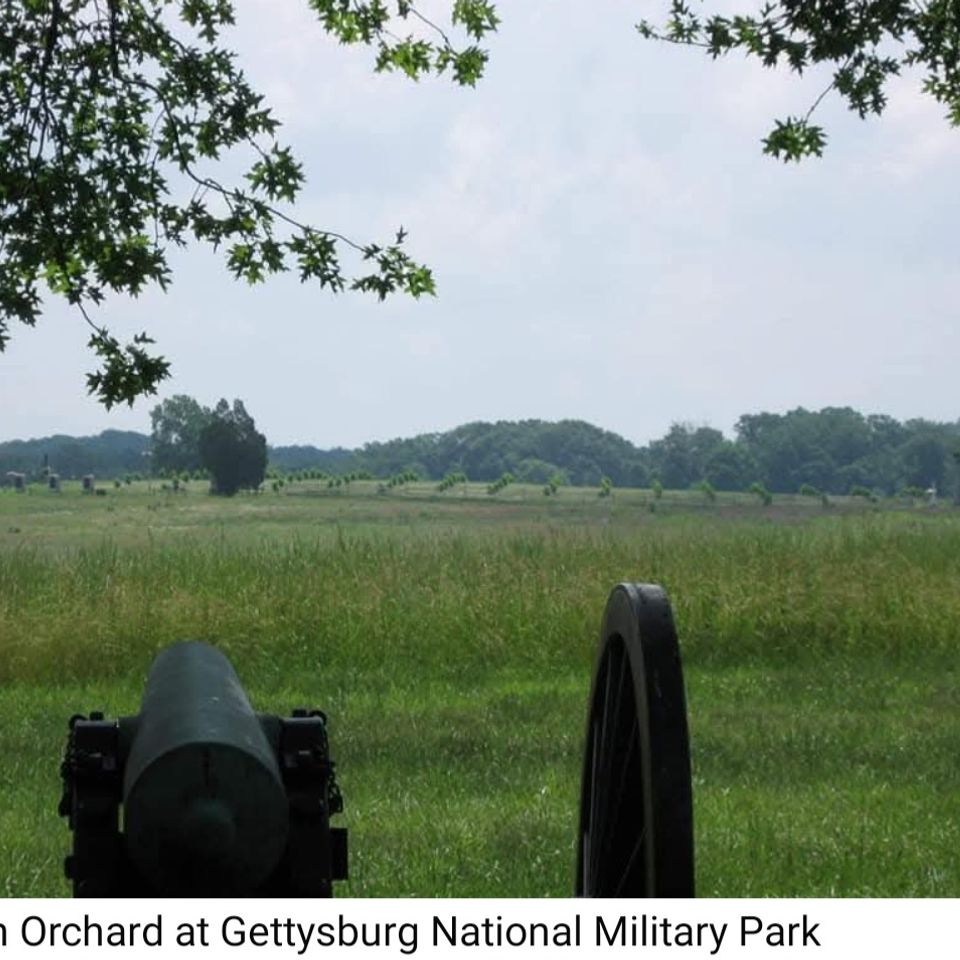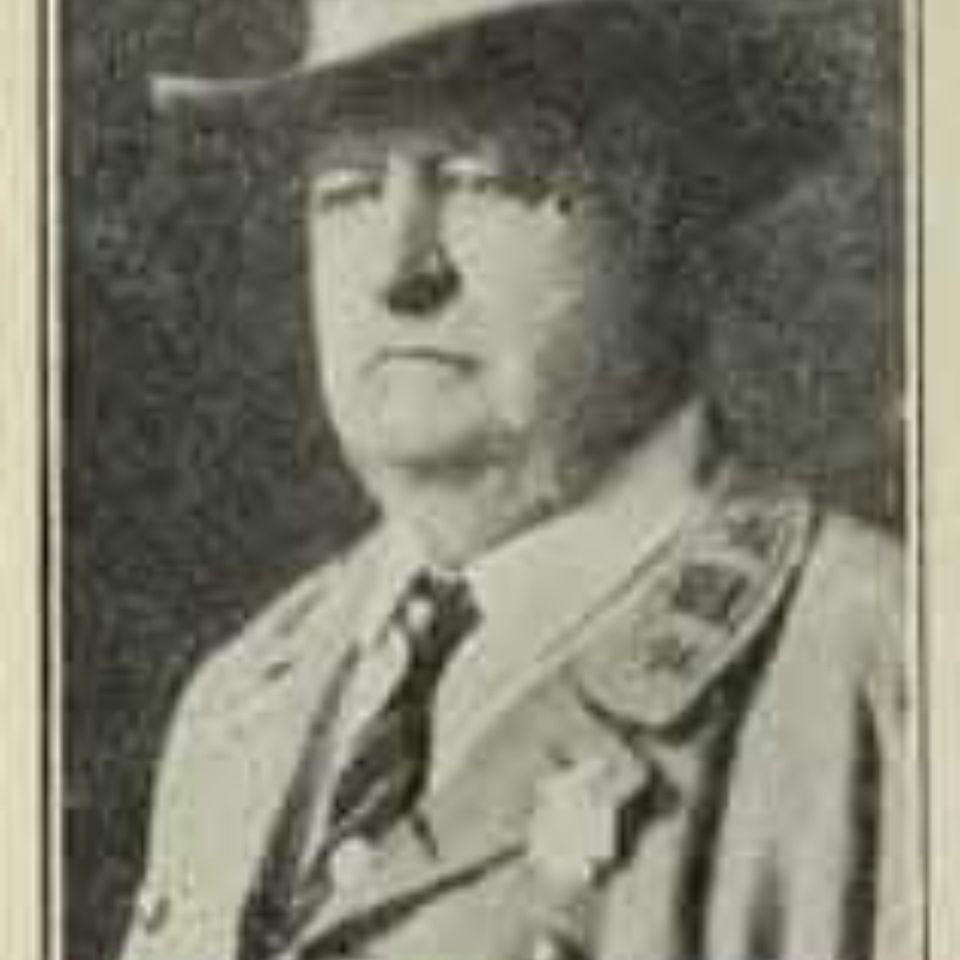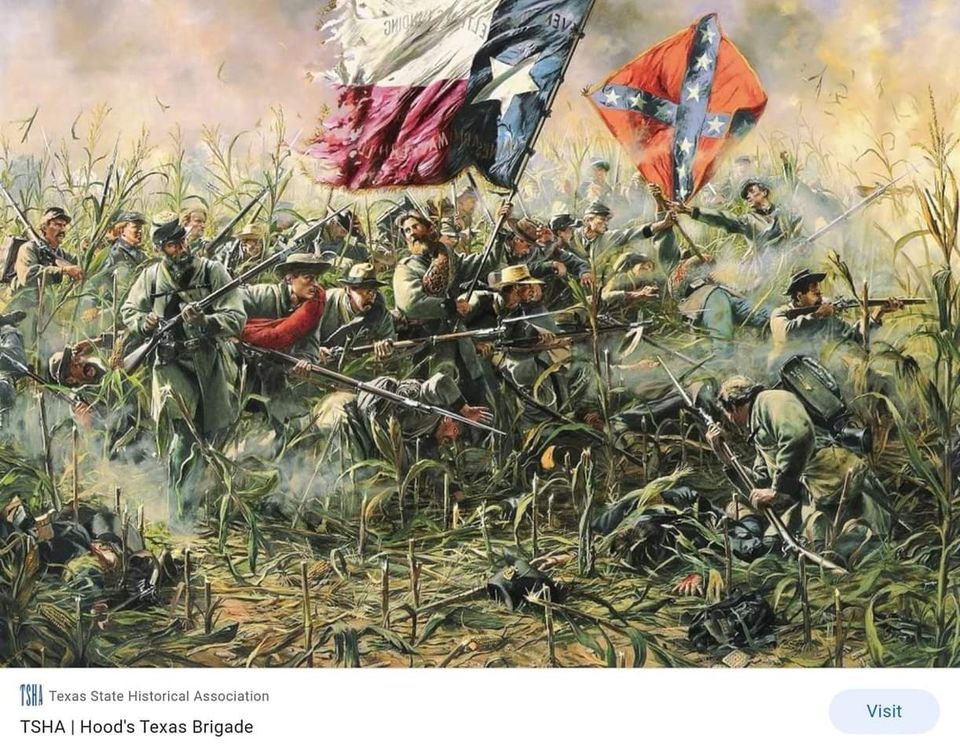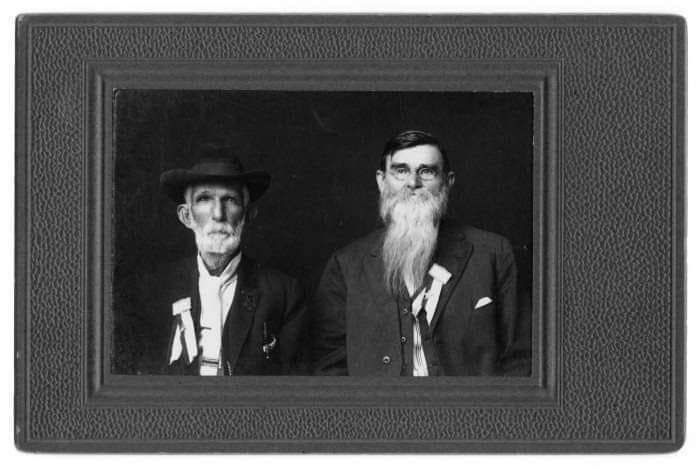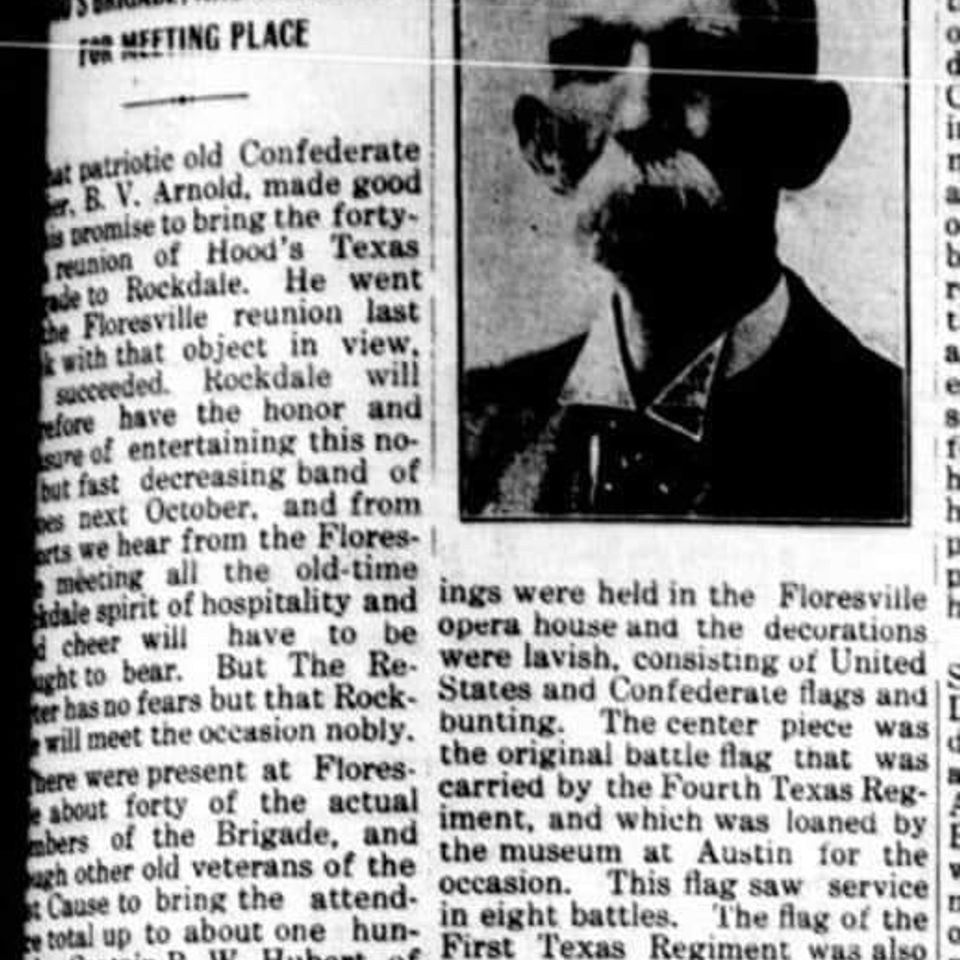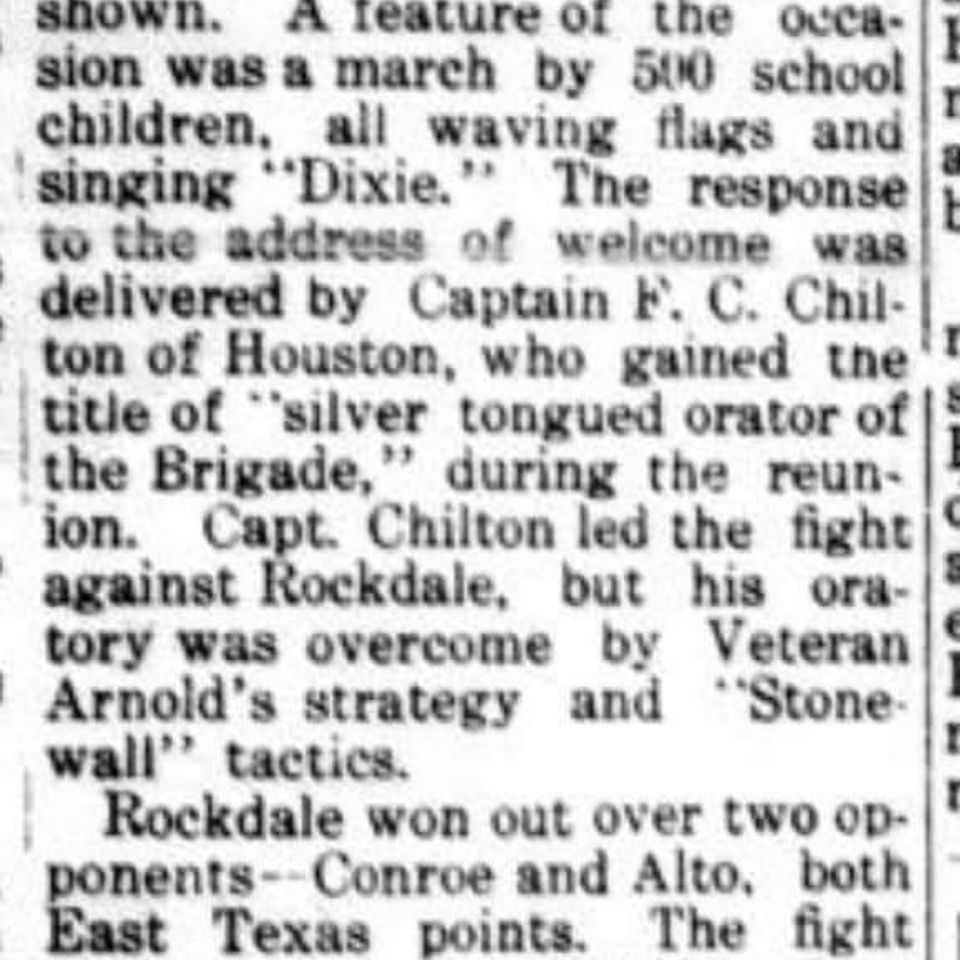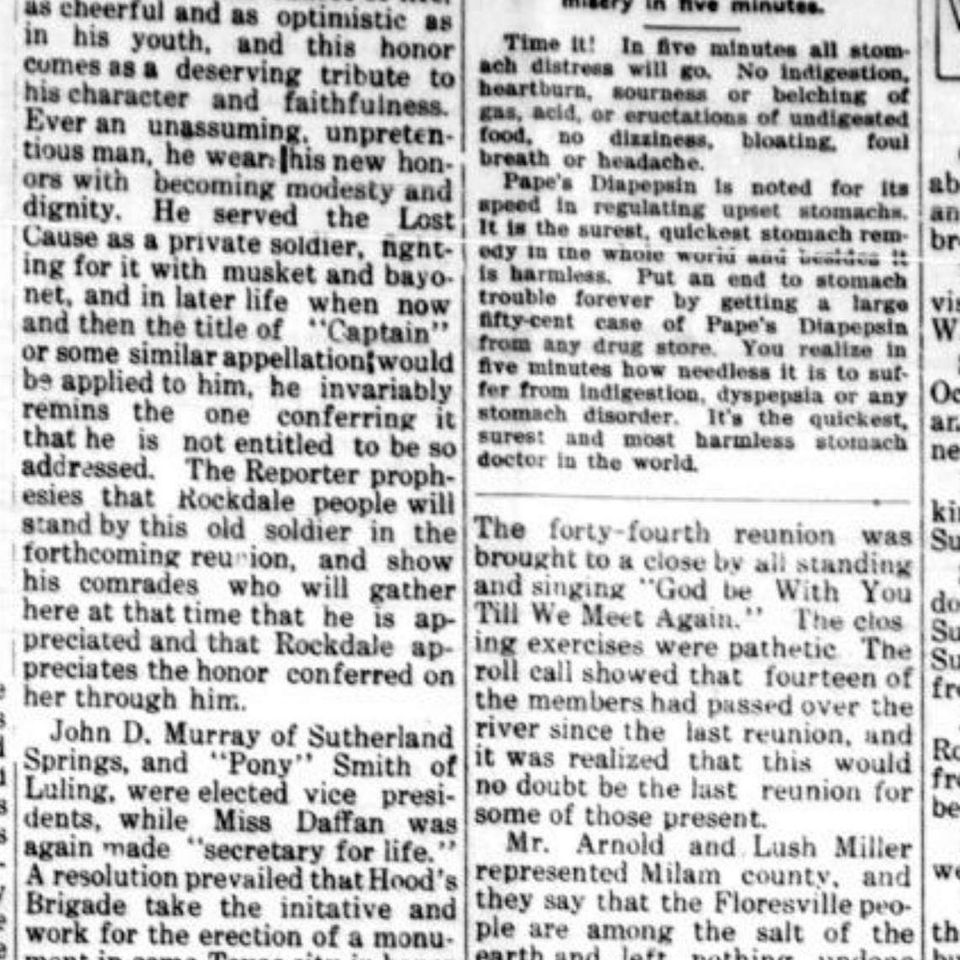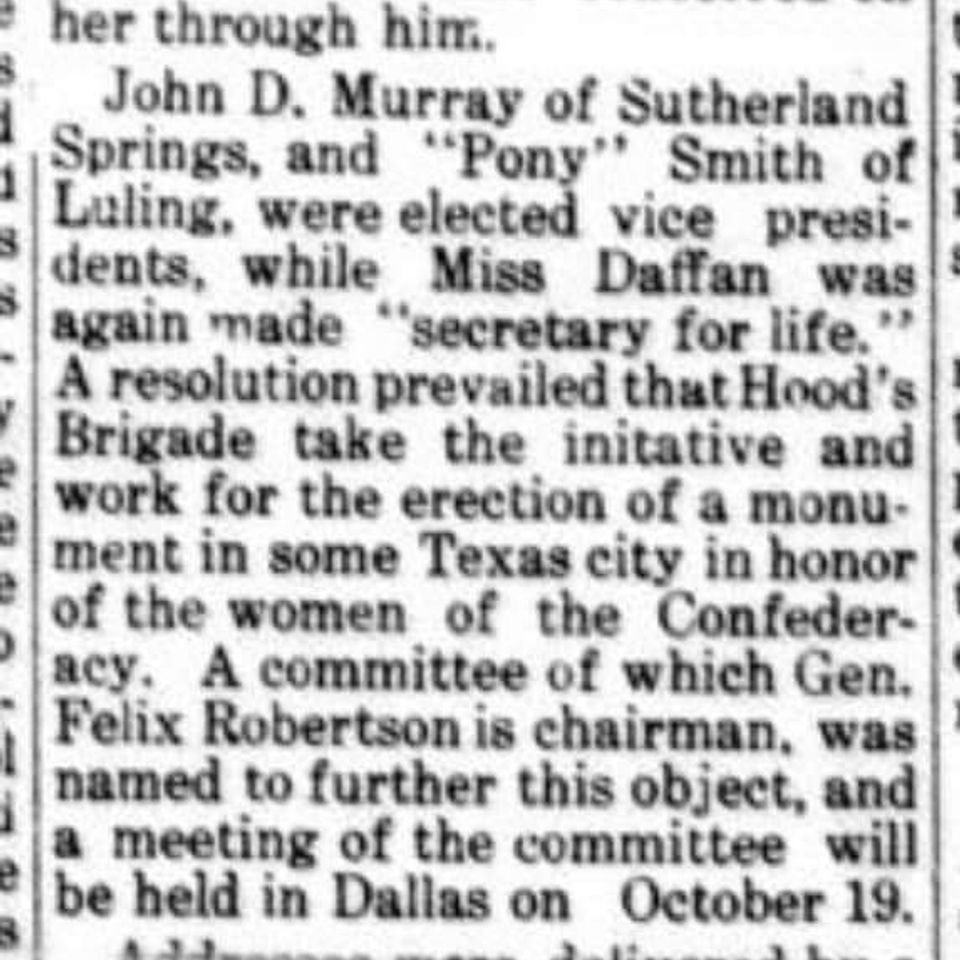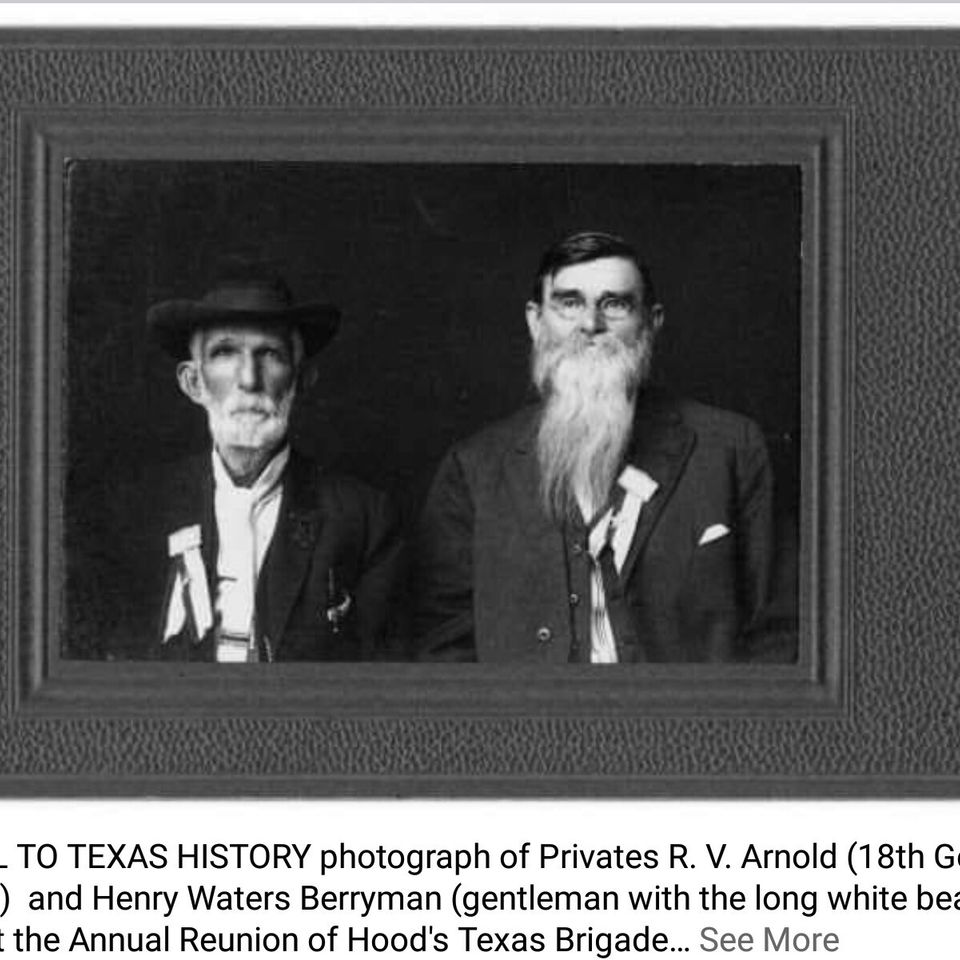by Barbara J. Wood
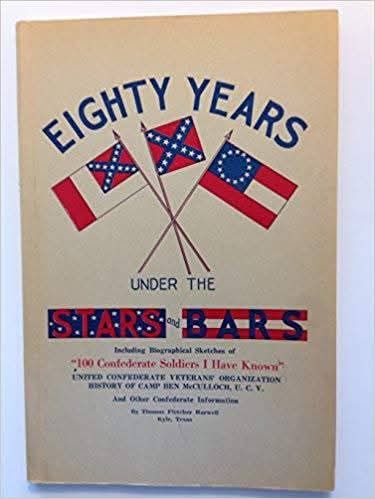
"Eighty Years Under The Stars and Bars"
"Eighty Years Under The Stars and Bars" By Thomas Fletcher Harwell (Author published, 1947, 108 pages.)
The full title of this fascinating and excellent read's full is, "Eighty Years Under The Stars and Bars: Including Biographical Sketches of 100 Confederates I Have Known, United Confederates Veterans' Organization History of Camp McCulloch, U. C. V., And other Confederate Information."
This fascinating read is the history and reminiscences of these great Confederate Soldiers who served in the Texas Infantry, Cavalry, Artillery, and Navy and were members of the UCV Ben McCulloch Division. The soldiers were interviewed during their "twilight years," about what regiment they belonged to, and what they did in the Civil War.
From men who were officers down to private their history is a invaluable source of first hand information to the life of a Confederate soldier from Texas and other states in the Confederacy, in both the western and eastern theaters of the war.
From men who were officers down to private their history is a invaluable source of first hand information to the life of a Confederate soldier from Texas and other states in the Confederacy, in both the western and eastern theaters of the war.
Many of the men served in famous regiments and brigades from Hood's Texas Brigade to Terry's Texas Rangers they provide a fascinating history of their exploits during the war. Men such as W. M. Allen who was in the 32nd Texas Cavalry, P. D. Turner who was a soldier in Sibley's invasion of New Mexico and Arizona, J. B. Polley of the Fourth Texas Infantry in Hood's Texas Brigade who fought in the many battles of the Army of Northern Virginia, G. A. Petty of the 18th Mississippi who was in Forest's famous cavalry brigade. There are over 100 of the brief biography and stores these soldiers told.
Many of these soldiers would become officers and brigade commanders in the United Confederate Veterans Association in Travis and Hays Counties, Texas. Mr. Harwell (the author/editor) was the son of a Confederate soldier and for over a forty plus years time-span interviewed the old Confederates and also gathered the obituaries of the men of Camp McCulloch. As a tribute to his father, Mr. Harwell did an outstanding job of telling these mens' stories and history. In 1947, when the book was published, only 108 Confederate Veterans were still alive, and Mr. Harwell says that once these men are gone an invaluable piece of history is also gone. The photographs of these old soldiers still show the tenacity and fighting spirit in their eyes. These men were proud of their service and rightly so.
The stories the men told range from the battle of First Manassas (Bull Run), Gaines' Mill, Elkhorn Tavern (Pea Ridge), Shiloh, Second Manassas, Sharpsburg, Gettysburg, Vicksburg, Atlanta Campaign, the siege of Petersburg, and the surrender of the ANV, Johnston's Army, Forests' surrender and many other battles and events. The stories and brief biographies are riveting and at 108 pages long it makes for a short read. This is unfortunate because you want to read much more of the soldiers of Texas and soldiers who served in other States in the Confederacy during the war and settled in the Austin, Texas area.
The author's dedication is:
" This book is affectionately dedicated by the author to General Henry T. Dowling of Georgia, Commander In Chief of the United Confederate Veterans to His Comrades - the small and feeble remnant, Who are still living, and to the memory of that Innumerable Host, Who have already stacked arms and pitched their tents on the external camping grounds, Kyle, Texas 1947." Mr. Harwell's excellent book of the men of Texas who fought in the war from 1861 to 1865, is a fine tribute to the memory of the brave men of the south, and the men of the Civil War of Texas. This is a scarce book to find, but it is an INVALUABLE and a MUST HAVE for anyone who is interested in Texas History, Texas Confederate History, the Confederacy, and the Civil War overall. A GREAT READ and TRIBUTE!
***********
Courtesy / Joe Owen Civil War Texas

